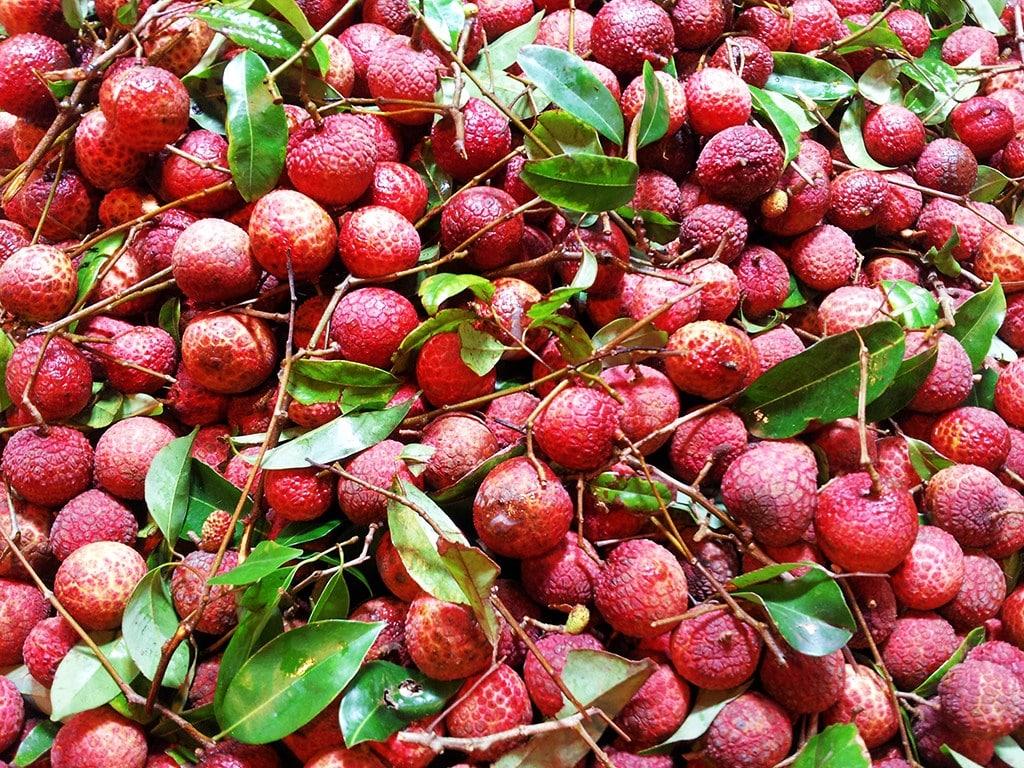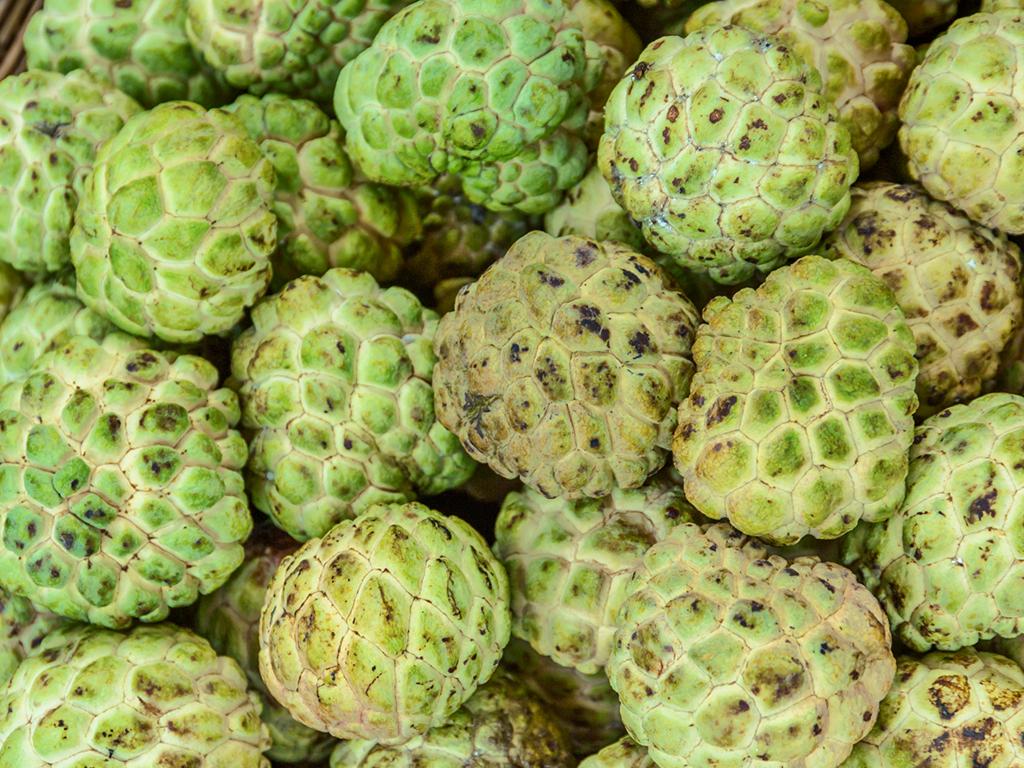5 Mins Read
We are so lucky in Hong Kong to enjoy a plethora of what to most people are the world’s most exotic and delicious tropical fruits. Below, we delve into the details of the five most common ones you will find at the wet market.
Lychee – Lai Zi
Lychee fruits are small round fruits with a reddish, rough outer rind and translucent white flesh inside of the skin. Each fruit contains a hard, dark brown seed. Lychee is extremely sweet, fragrant and full of juice. Lychees originated in China but are now grown across the Far East.
High Season: May-August
How To Eat: Lychees are best eaten raw though poaching them/marinating them in citrus juice can be delicious. Peel off the rind and eat the juicy translucent flesh, avoiding the seeds. Lychees make great additions to cocktails, simply drop a peeled and deseeded one in your favorite drink or into a glass of Champagne. Alternatively pop a few into the blender with your morning smoothie for a tropical boost or blend with bananas and make ice pops.
What To Look For: Make sure to choose lychees with skin as pink or red as possible. This speaks to sweetness and juiciness. Too grin and they are underripe, too brown and they are past their prime. Lychees do not further ripen after being reaped.
Storage: One collected off their trees, lychees do not ripen further. They can last in the fridge unopened for a good week.
Longan/Longaan – Lung Ngaan
Longans look similar to lychee fruits though their skin is more yellowy brown and their rind is less bumpy than the former. They are related to the lychee and whilst similar in taste, they are far less sweet and far less juicy. In Cantonese, their name means ‘dragon eye’ as when cut in half, the white flesh and the black inner seed resemble an eyeball. Dried longan are an important ingredient in Traditional Chinese Medicine (TCM).
High Season: May-September
How To Eat: Use fresh longan the same way you would lychees. They are mostly eaten raw.
What To Look For: Fresh longan should have a leathery light brown skin. Ripe ones have a harder shell with some give.
Storage: Unopened, longans can be kept at room temperature for a few days days and in the fridge for up to a week.
Persimmons – Ci
Persimmons look like big orange tomatoes both on the outside and cut in half. When ripe, their flesh is sweet with some comparing the taste to honey. When unripe, the fruits are sour to the point of being inedible. There are two main varieties of persimmon: the Hashiya (shaped like an acorn) and the Fuyu (looks like a squat tomato). The ones we find in the wet markets are the latter.
High Season: September-November
How To Eat: Scoop out the fruit’s flesh and eat raw or dry out whole peeled pieces in a low temperate oven/dehydrator and use as you would other dried fruits. Dried persimmons are similar to dried dates, figs and apricots. They are a delicious addition to homemade granola for example.
What To Look For: Select the brightest colored fruits, and make sure they are plump with taught skin. Avoid ones with bruises.
Storage: Persimmons can be stored at room temperature for a couple of days at the most (and will continue to ripen) and for a few days more if refrigerated.
Chinese Wampee – Wong Pei
Wampees have a texture and size similar to grapes save for their lightly fuzzy outer skin, which is a golden yellow hue- their name means ‘yellow skin’ in Cantonese- and their large green seeds. When ripe, their flesh is extremely sweet. Wampees are used to make a carbonated alcoholic drink (similar to Champagne) in certain parts of Southeast Asia.
High Season: July-August
How To Eat: Most people eat wampees raw and discard the skin and avoid the seeds. Use to make ice pops/sorbets, add pureed wampee to desserts/cakes or make wampee jam. Make sure to use only the ripest fruits to ensure sweetness.
What To Look For: Pick wampees with golden skin. Light brown spots on the fruit are fine but avoid pieces with cracks/ruptures on the skin as they’re overly ripe.
Storage: Wampees only last for a day or two at room temperature though their shelf life can be extended for a few days more in the refrigerator.
Custard Apple – Faan Gwai Lai Zi
Custard apples are heart shaped, light green fruits with quilt-like patches that are prone to bruising. Their ugly exterior belies their pleasing scent (some liken it to that of a pineapple) and sweetness, their smooth and creamy flesh explaining their name. Most people will describe the taste and texture of a custard apple as a cross between a pear and a banana. The fruits contain large black, hard seeds that are inedible. Custard apples are related to the cherimoya fruit and the soursop fruit.
High Season: May-August
How To Eat: Cut in half and scoop the flesh directly, discarding the large seeds and avoiding the skin. A few squeezes of your favorite citrus fruit juice to enhance the custard apple’s sweetness and flavor. Pureed custard apples make great frozen desserts (ice pops or sorbet).
What To Look For: Don’t go for super hard or super soft ones. They are ripe when they are firm but giving to the touch. If they are covered in brown/black bruises, they are perfectly ripe.
Storage: Ideally, eat as soon as possible after buying. If perfectly ripe, they are best stored in the fridge for a couple of days.
We hope you have enjoyed our Wet Market Series. In case you missed them, try the previous entries in this series:
Green Queen Living: Wet Market Series Part 6 – Guide to Chinese Dried Goods (Gon Fo)
Green Queen Living: Wet Market Series Part 5 – Guide to Tofu Products (Dao Fu)
Green Queen Living: Wet Market Series Part 4 – Guide to Chinese Herbs & Spices (Heng Liu)
Green Queen Living: Wet Market Series Part 3 – Guide to Chinese Root & Tuber Vegetables (Gan)
Green Queen Living: Wet Market Series Part 2 – Guide to Chinese Melon & Gourds (Gwaa)
Green Queen Living: Wet Market Series Part 1 – Guide to Chinese Leafy Greens (Choy)
All images courtesy of Green Queen.









